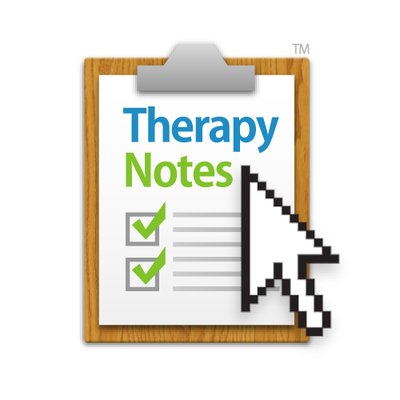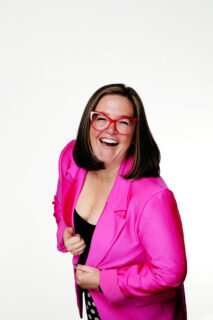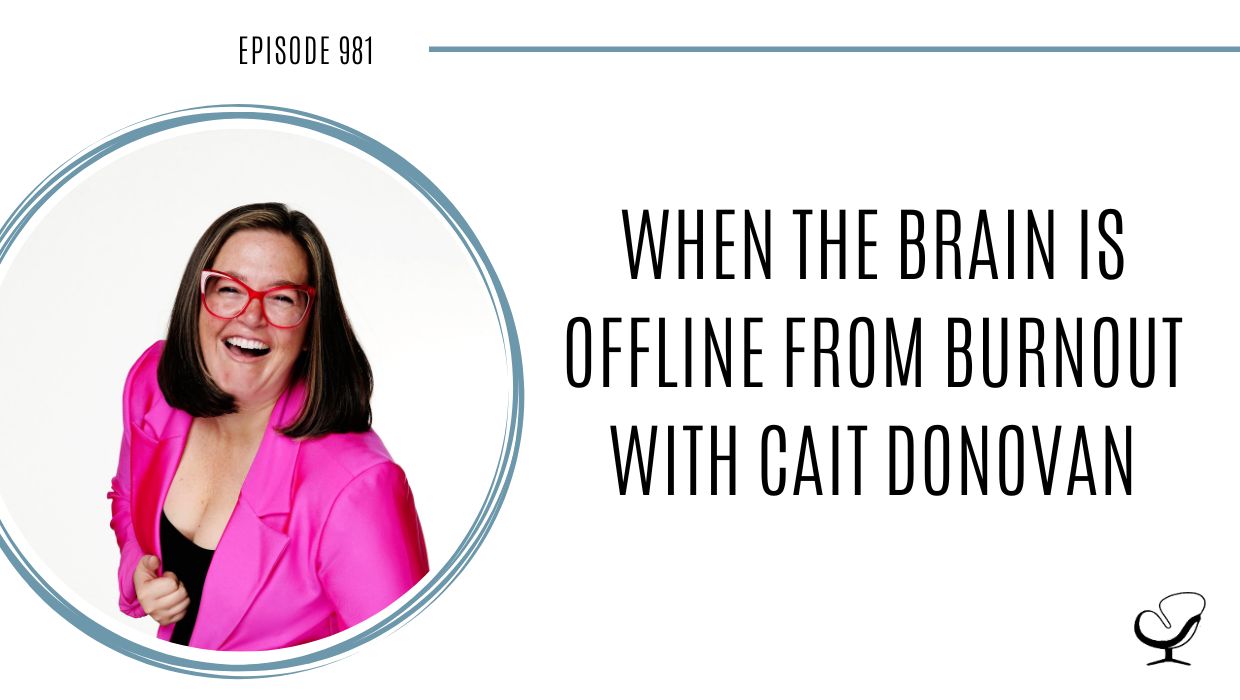Podcast: Play in new window | Download | Embed
Why is there no one “source” for burnout? Do you know what your BPFs are – how can you find them out? Why should you keep a resentment journal – and not a gratitude journal – when you are in the depths of burnout?
In this podcast episode, Joe Sanok speaks about when the brain is offline from burnout with Cait Donovan.
Podcast Sponsor: Therapy Notes

As a therapist, I can tell you from experience that having the right EHR is an absolute lifeline. I recommend using TherapyNotes. They make billing, scheduling, notetaking, telehealth, and E-prescribe incredibly easy. Best of all, they offer live telephone support that’s available 7 days a week.
You don’t have to take my word for it – Do your own research and see for yourself – TherapyNotes is the #1 highest-rated EHR system available today, with 4.9 out of 5 stars on Trustpilot.com and on Google.
All you have to do is click the link below, or type promo code JOE on their website www.therapynotes.com, and receive a special 2-month trial, absolutely free.
If you’re coming from another EHR, TherapyNotes will import your demographic data quick and easy at no cost, so you can get started right away.
Trust me, don’t waste any more of your time, and try TherapyNotes.
Meet Cait Donovan

Cait Donovan is an International Keynote Speaker, VP of the NYC Chapter of the National Speakers Association, host of “Fried – The Burnout Podcast,” author, and an acupuncturist with a master’s degree in Chinese medicine. Her creative burnout recovery solutions have been featured on podcasts and online magazines such as “Forbes”, “NPR,” and “The New York Post” and in companies such as The New York Public Library and PepsiCo.
Visit Cait’s website and listen to her podcast. Connect on Facebook, Instagram, and LinkedIn.
FREEBIE: Resentment Journal Cheat Sheet
In this Podcast
- How Cait got into burnout work
- Expanding your skillset from local to national
- There may be no “source” to burnout
- BRF and BPF
- Don’t be ashamed about burnout
- Keep a resentment journal (which becomes a gratitude journal later on!)
- Cait’s advice to private practitioners
How Cait got into burnout work
Cait is a private practitioner and owns practices in New York City.
I thought that I did enjoy my practice but what I realized at the time was that I was not providing just acupuncture, I was providing acupuncture, I was providing life coaching, and I was providing emotional support … So I was filling in three or four roles for people and only getting paid for one. (Cait Donovan)
With time and hindsight, Cait came to realize that her constant over-giving came from a deep-seated fear of not being likeable, loveable, or helpful to those around her. Understandably, Cait then burned out terribly.
In 2016, Cait read a Harvard Business Review article about burnout and she suddenly realized that that was what she was suffering with at the time.
Through researching it, Cait discovered that most burnout research was based on doctors and nurses, and not on clinicians or mental health practitioners, and so she decided to fill that niche.
Expanding your skillset from local to national
Cait’s main tip is to notice the patterns in your clients and expand that need and information to suit a bigger audience since if more than a handful of people are experiencing something, likely, more people are as well.
When you … find yourself repeating similar advice to 10 or more people a week and you know that the advice is solid and you hear good feedback on that advice, make sure you write that advice down somewhere, because that can be the beginning of a Keynote, or a workshop, or something that can be done on a larger scale. (Cait Donovan)
One of the best ways to go from local to national is to redress your message so that it still resonates with you and your clients at the core but is fluid enough to reach people who are not your direct audience – yet!
I think it’s a critical piece, and it also helps you hone in on your main messages, and I think making them more complicated doesn’t actually get you anywhere. I think sometimes as medical professionals we try to be too clever about things. (Cait Donovan)
There may be no “source” to burnout
As Cait explains, there isn’t necessarily a singular “source” for your burnout, but instead, a collection of long-term stressful situations, habits, and/ or a lack of boundaries with little to no downtime, saying “no”, or prioritizing your needs.
Understanding the background of your burnout story is absolutely critical, but almost no one knows all the pieces that go into a burnout story! (Cait Donovan)
Research has shown that people who respond less to stress end up more burned out because they do not take the time to rest or restructure their lives when those first burnout symptoms show, leading it to become worse and worse.
Responding to and adjusting your life when stress is present is good because it protects you in the long run. Just soldering on always can lead to more frequent or prolonged burnout, and even put you at risk with chronic issues.
BRF like BPF
Cait breaks her process down into burnout risk factors; BRF, and burnout prevention factors, BPF.
Some burnout risk factors include;
- Intergenerational trauma
- Unexamined value systems within families
- Cultural family pressures
- Attachment styles
- Substance abuse disorders
- Epigenetics, and others
In the burnout prevention factor section, there are complements to all of the burnout risk factors.
If an insecure attachment style can increase your overall vulnerability to burnout – it does not cause burnout, it increases your vulnerability to burnout – then a secure attachment will decrease your vulnerability to burnout. (Cait Donovan)
So, as Cait then explains, these BPFs, burnout prevention factors, work like SPFs, which protect you from damage from the sun.
Some people need an SPF of 4 so that their skin doesn’t burn. My family is Irish … and I need SPF 50 at all times, or else I will burn immediately! … Some people need less BPFs because they have less BRFs, so they have less [burnout] risk factors, so they might only need 10 protection factors. (Cait Donovan)
Don’t be ashamed about burnout
Remember that every person has a different set of needs and has been dealt a different hand of cards in life to work with from the get-go.
There is no shame in needing more burnout prevention factors if you have more things that you need to manage.
Boundaries and self-compassion are necessary, and remember that burnout is nothing to be ashamed of.
If we’re looking at traits and states [of] burnout risk factors [like] the coping mechanisms that lead to high stress, perfectionism, people-pleasing, lack of boundaries, hyper-independence, hyper-vigilance … So the traits and states that are BPFs are having a growth mindset, having an internal locus of control, being able to hold healthy, flexible boundaries … Understanding that asking for help isn’t a weakness … Simple things, really. (Cait Donovan)
They may not seem simple in the beginning because they are unfamiliar, but essentially these BPFs are simple – they are not complex, just difficult – at least in the beginning.
Keep a resentment journal (which becomes a gratitude journal later on!)
Resentment is a great tool for sniffing out where boundaries may have been crossed that someone isn’t even aware of. Forcing yourself – or your clients – to keep a gratitude journal when they are burnt out and resentful isn’t going to do anything good.
A gratitude journal without embodying the feeling of gratitude is useless, and would only be helpful as a green flag to show when a person is coming out of the depths of burnout.
Everytime I find resentment in my world, it is because I have chosen to overgive in a situation, or I have engaged in my age-old habit of self-neglect and self-abandonment. (Cait Donovan)
Cait’s advice to private practitioners
You only have to give people what they are coming for! You do not have to be the fuel that serves every single issue in their lives. You have to just play your role, and that’s it.
Sponsors Mentioned in this episode:
- Trust me, don’t waste any more of your time, and try TherapyNotes.
- Visit practiceofthepractice.com/voicemail and leave a voicemail for the 1000th episode!
Useful links mentioned in this episode:
- Visit Cait’s website and listen to her podcast. Connect on Facebook, Instagram, and LinkedIn.
-
Email Joe at [email protected] to suggest guests for the show
Check out these additional resources:
Events – click on the event’s dropdown
Sign up to join the free webinars and events here
Practice of the Practice Podcast Network
Free resources to help you start, grow, and scale
Apply to work with us — a decision-making matrix for your next steps
Meet Joe Sanok

Joe Sanok helps counselors to create thriving practices that are the envy of other counselors. He has helped counselors to grow their businesses by 50-500% and is proud of all the private practice owners who are growing their income, influence, and impact on the world. Click here to explore consulting with Joe.
Thanks For Listening!
Feel free to leave a comment below or share the social media below!

